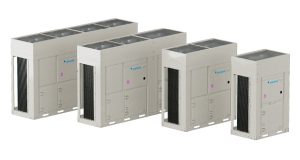 Richard Jones, Managing Director, SWC & Pest Divisions at OCS UK explores the latest innovations driving change in pest control
Richard Jones, Managing Director, SWC & Pest Divisions at OCS UK explores the latest innovations driving change in pest control
The scope of pest control is expanding thanks to technological advancements and changing attitudes around animal welfare and sustainability. It is not just about trapping and exterminating rats, birds and insects using manual techniques and poisons; pest specialists are now increasingly adopting digital solutions and non-toxic methods to improve efficiency and effectiveness.
While this is contributing to smarter and safer pest management, the complexity of pest control still requires a diverse skillset and a deep understanding of various environments and species to ‘treat’ issues before they escalate, while ensuring no environmental harm is an unfortunate biproduct of pest operations.
TECHNOLOGY ADVANCEMENTS
Over the past decade, the rapid adoption of cutting-edge technologies has driven an evolution in modern pest management. Digital monitoring systems, for instance, have become a common solution for many pest specialists. Systems like electronic mouse traps use sensors, cameras and data analysis to provide real-time information of pest activity. Insights, such as heat mapping and trend analysis, allow pest professionals to create proactive pest control strategies and support more informed decision-making rather than relying on just visual inspections. They also reduce the need for frequent technician visits therefore boosting efficiency and saving time. Depending on the product, a system can be left in a building overnight and send email and text alerts whenever there is pest activity. If a mouse is then caught in a trap, the pest technician can respond straight away. In industries that have strict hygiene regulations, such as food and beverage, this provides confidence and reassurance that pests are dealt with rapidly.
Another exciting advancement is the use of AI and machine learning in pest detection which could include identifying and counting different types of insects and predict infestation risks before they become an issue – minimising the need for excessive pesticide use and optimise intervention methods.
Integration of the Internet of Things (IoT) is already a reality in pest management with smart sensors and devices supporting real-time monitoring and targeted pest control measures. Smart traps can sense and attract pests, environmental sensors monitor conditions that can influence activity, and camera surveillance is helping to track and identify pests. Drone technology is also making waves in the field. Rather than a technician putting themselves at risk by being on the roof of a building to check for birds, drones can conduct aerial surveys and produce detailed, high-resolution imagery of potential nesting sites. Sophisticated bird alert systems are also being used to track and scare birds from buildings, reducing the need for expensive nettings and helping businesses keep a bird-free environment in a cost friendly and efficient way.
Technology has significantly changed the pest industry for the better, with benefits including operational efficiency, increased customer confidence, and practices that support compliance, and as the technology adoption rates increase, the chemicals and pesticides being used is decreasing. Digital monitoring, for example, is now widely used by smaller companies as it is cost effective and less damaging to the environment; it’s no longer a technology that is just accessible to those businesses with larger budgets.





